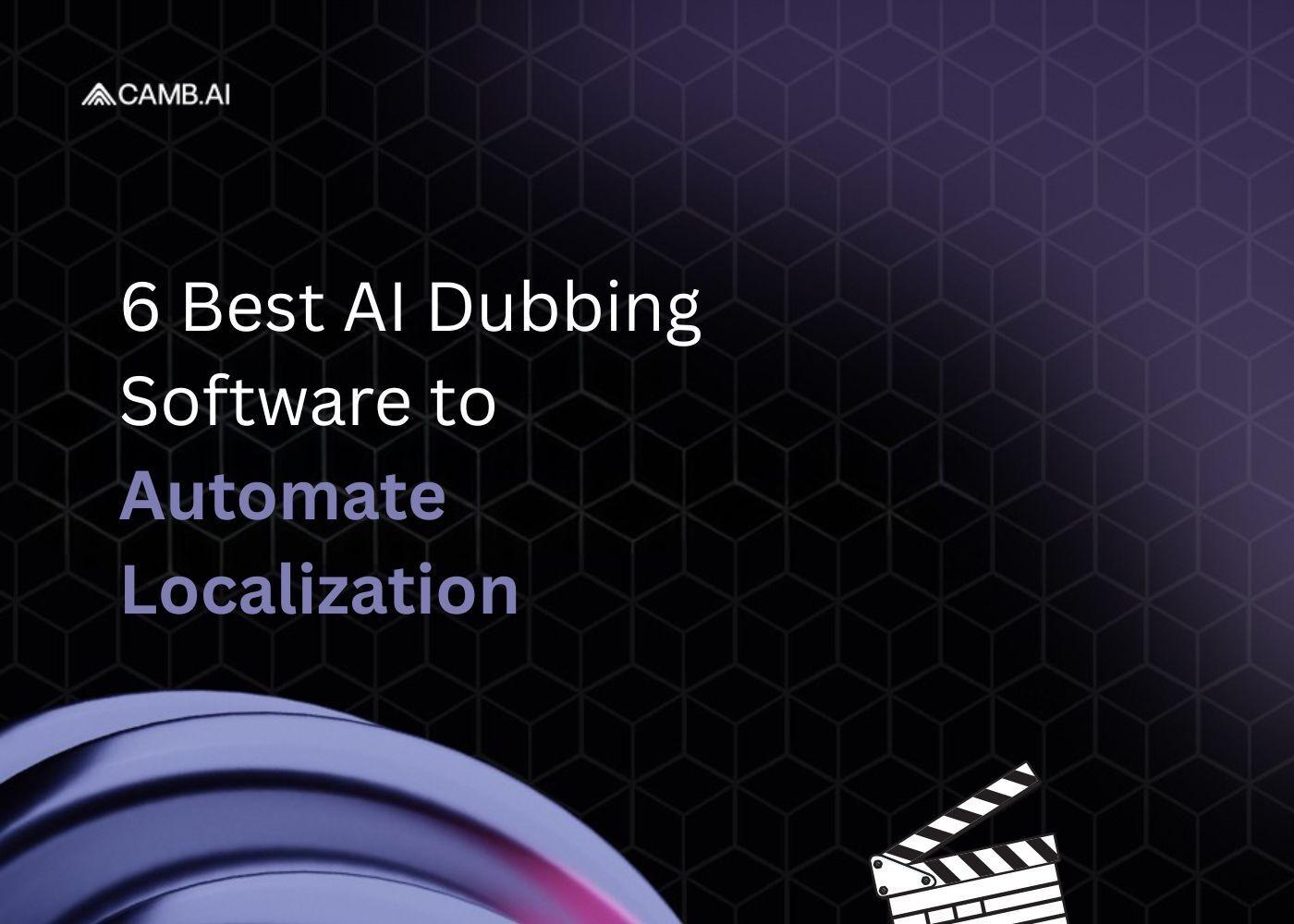CAMB.AI’s AI-powered multilingual SEO combines the BOLI model and website translation to localize websites into 150+ languages with SEO-ready outputs and global reach.

AI localization is the automated process of translating and dubbing video content into multiple languages using artificial intelligence. It removes the need for voice actors, manual sync, and traditional studio time—allowing content to scale across global audiences instantly.
The demand for this capability has exploded as creators, broadcasters, and enterprises realize that localized content outperforms non-native media on every metric: retention, trust, and reach.
In this article, we will cover the best AI dubbing tools available today. You'll find a structured comparison and key feature breakdown across all the top AI dubbing tools.
AI dubbing replaces the traditional multi-step localization workflow with a single automated system. Instead of hiring translators, voice actors, sound editors, and localization experts, AI tools do it in three steps:
The result is dubbed content that sounds natural, is cost-efficient, and is scalable—key requirements in modern content distribution.
AI localization has overtaken studio dubbing in high-volume environments because it’s faster, cheaper, and nearly indistinguishable to viewers. A process that once required 10–15 people and several weeks can now be completed in hours. There’s no need for back-and-forth reviews with actors, or studio rebooking.
And crucially, the voice remains consistent across episodes or projects, a massive challenge in manual workflows.
Before selecting an Best AI Dubbing Software for AI localization platform, evaluate tools using the following six criteria:
Let’s break down the most effective tools in a comparative and comprehensive manner.
Camb.AI is the only ai localization platform offering both real-time voice dubbing and unmatched voice realism across over 140 languages. It is the technology behind some of the world’s most important AI dubbing firsts—like the first IMAX movie translated with AI, the first multilingual sports livestream, and the first AI-powered post-match interviews at a global tennis championship.
The proprietary MARS model requires just 2–3 seconds of reference audio to replicate tone, rhythm, pitch, and style. It preserves emotion, character, and nuance—making it suitable for dramatic films, anime, and sports broadcasting.
MARS is trained on millions of samples across gender, accent, and language to produce high-fidelity speech in low-resource and high-resource languages alike. Camb has also released an English-only version of MARS as open source for developers.
The BOLI model goes beyond direct translation. It rewrites speech using native grammar and idiomatic expressions, ensuring the result sounds like something a native speaker would actually say. It dynamically adapts tone, slang, and cultural nuance.
This engine is especially powerful for translating live broadcasts and multi-speaker events—something traditional subtitle-based tools fail at.
👉 Try it now: Camb.AI DubStudio
👉 See how MLS used Camb: MLS AI Stream Case Study
ElevenLabs supports 29 languages and is primarily used for audiobooks, podcasts, and creator voice clones. It allows upload-based cloning and integrates directly with YouTube and short-form content tools. Voice quality is high, though it lacks lip-syncing and real-time output.
Ideal for solo creators or creators who need tone-sensitive narration across a few core languages.
Wavel AI is used for high-volume content teams that require fast dubbing across 100+ languages. It includes voice library selection, basic editing, and API integrations for enterprise content systems. It does not yet match Camb in emotional realism or context-sensitive translation, but it's widely used in media distribution.
Synthesia uses avatar-led video generation with speech syncing. It’s often used in e-learning and corporate training, and it allows voiceover dubbing alongside facial animation. Support is limited to ~30 languages, and emotional inflection is minimal, but it's effective for internal comms or pre-scripted demos.
Dubverse supports 60+ languages with over 450 pre-recorded AI voices. It offers bulk video processing, useful for studios and editors localizing media libraries. In-house linguists refine results manually. It’s best for repurposing evergreen content, though voice consistency across videos can vary.
Maestra supports over 125 languages but uses limited voice cloning models. It's ideal for beginners or marketers needing fast turnaround on subtitles, transcriptions, and voiceovers. Its strength is accessibility, not audio depth.
Whether you're a sports and media professional or simply passionate about AI’s impact on improving content accessibility, this newsletter is your go-to guide for valuable insights and updates
AI localization doesn’t just translate text—it dubs entire videos with voices that match tone, timing, and emotion. It adapts not only language but context.
Yes. Camb.AI, for instance, uses MARS to recreate your vocal tone from just a few seconds of reference audio. It doesn’t just translate—it replicates.
Yes. Camb’s DubStream supports real-time multilingual dubbing, making it ideal for sports, conferences, and live media broadcasts.
Yes. AI tools now support YouTube, TikTok, and podcast content. Creators can automatically localize their content into 30+ languages.
Accuracy depends on the model. Camb.AI’s BOLI model, for instance, goes beyond literal translation and adapts grammar, idioms, and tone. That level of realism sets it apart.
Global content consumption is already moving toward voice-dubbed video. Inaction has a cost. While competitors scale into 20+ languages, your content remains limited to your primary language.
If your audience includes even 15% non-native speakers, you're not just losing views—you’re ignoring new markets entirely. AI localization doesn’t just expand reach. It reduces production costs, improves engagement, and closes the language equity gap.
News, insights, and how-tos; find the best of AI speech and localization on CAMB.AI’s blog. Stay tuned with industry leaders.